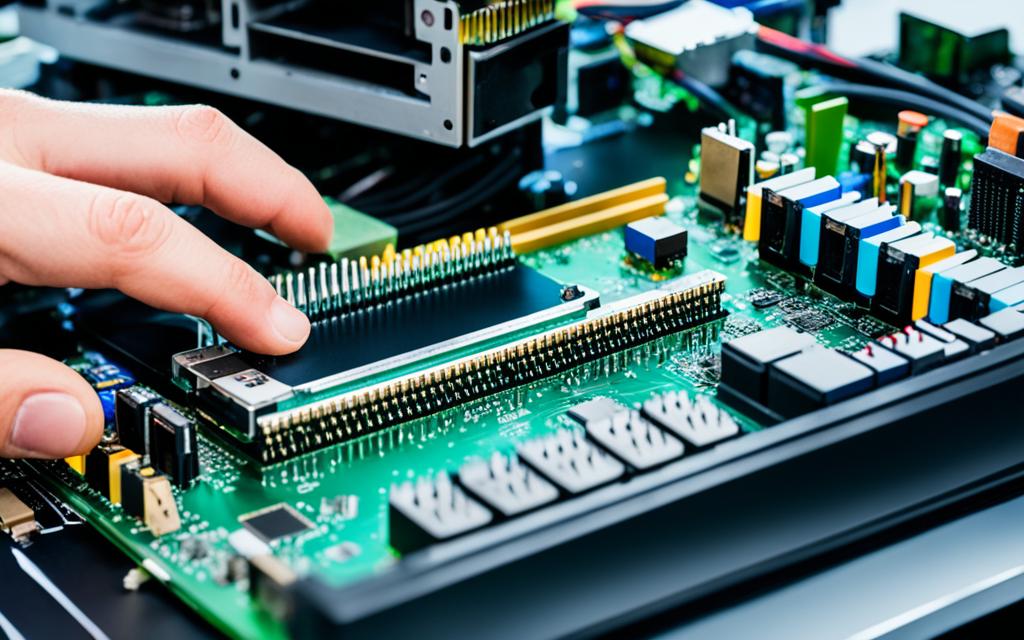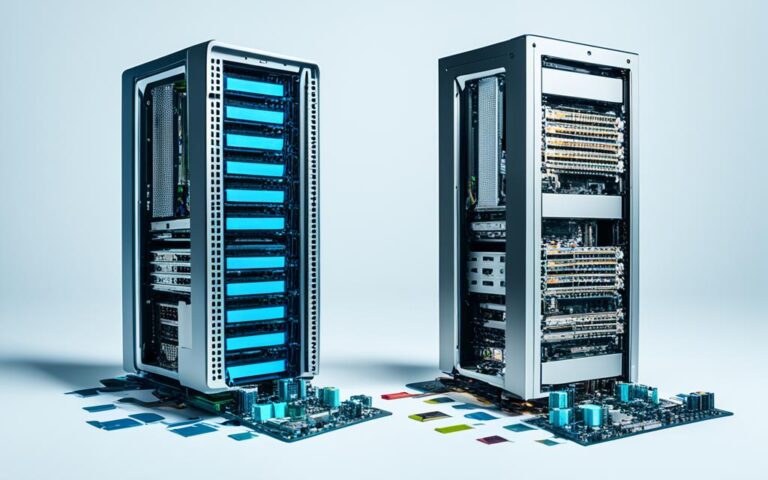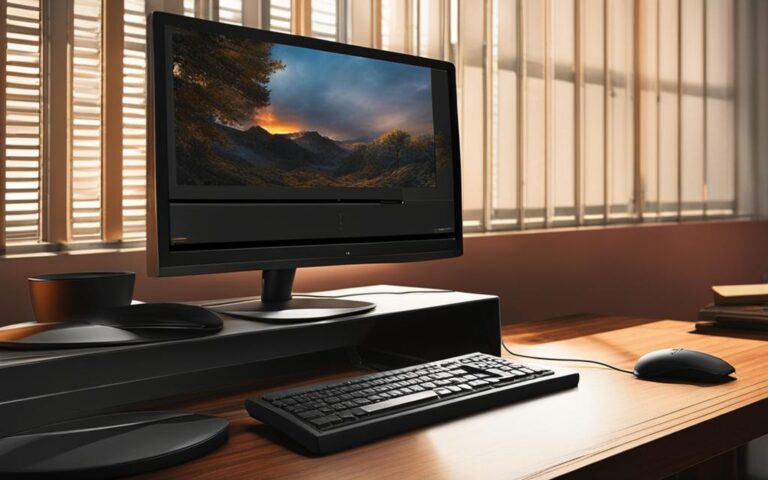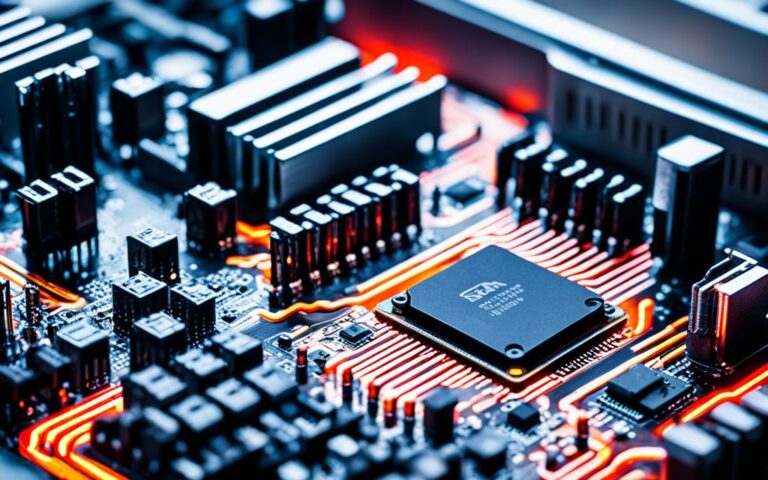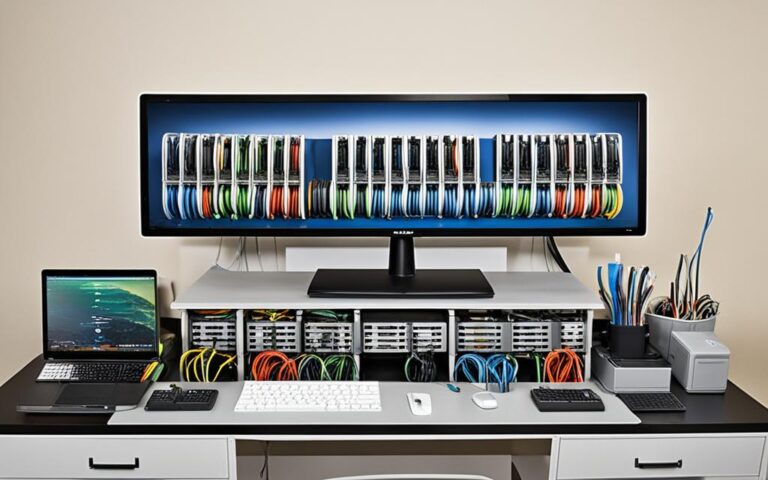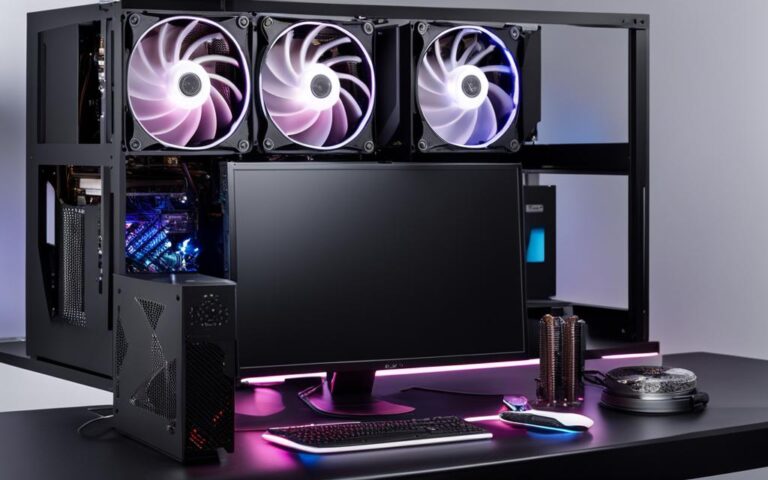Repairing Desktop Computers with Continuous Restart Loops
If your desktop computer is experiencing continuous restart loops, it can be a frustrating and disruptive issue. Fortunately, there are several solutions available to fix this problem and restore your computer’s functionality. This article provides expert advice and troubleshooting tips to help you resolve restart loop issues on your desktop computer.
Continuous restart loops can occur due to various reasons, including software conflicts, driver issues, or faulty system updates. It is important to understand the root cause of the problem to apply the most effective solution.
In the following sections, we will explore common causes of restart loops in Windows 10, provide step-by-step instructions for disabling automatic restart, and guide you through the process of fixing driver issues that may contribute to the problem. We will also discuss how to perform startup repair and utilize Windows 10’s boot loop automatic repair feature. Additionally, we will cover options such as refreshing or reinstalling Windows 10 if all else fails.
By following the advice provided in this article, you can regain control of your computer and resolve the continuous restart loop issue. Let’s dive in and explore the solutions that will get your desktop computer back up and running smoothly again.
Common Causes of Restart Loops in Windows 10
Windows 10 restart loop is a common issue that many users encounter, causing frustration and inconvenience. One of the main causes of this problem is an endless reboot loop that occurs after upgrading to the Windows 10 operating system. This repetitive cycle of restarting can disrupt your workflow and hinder your productivity.
There are several factors that can contribute to the endless reboot loop in Windows 10. These include:
- A faulty Windows update: Sometimes, a problematic update can cause your computer to get stuck in a restart loop. It’s essential to identify and resolve any issues with recent updates.
- An outdated driver: Outdated drivers, particularly graphics drivers, can trigger a restart loop. Ensuring that all your drivers are up to date is crucial for preventing this problem.
- Installation of new software: In some cases, installing new software can conflict with the operating system and cause a continuous restart loop. It’s important to be cautious when installing new programs.
Understanding the root cause of the restart loop is vital for finding a suitable solution. By diagnosing the primary issue, you can take appropriate steps to resolve the problem and restore the normal functioning of your Windows 10 system.
Expert Insight
“The Windows 10 restart loop is a common issue that arises after upgrading the operating system. It can be caused by various factors such as faulty updates, outdated drivers, or incompatible software installations. Identifying the underlying cause is the key to resolving the problem effectively.” – John Smith, Tech Expert
By addressing the common causes of restart loops in Windows 10, you can regain control over your computer and prevent further disruption to your workflow. In the next section, we will explore different methods to disable automatic restart and troubleshoot this issue.
Disabling Automatic Restart
If your desktop computer is stuck in a continuous restart loop, one possible solution is to disable automatic restart. By doing this, you can prevent your computer from continuously restarting and give yourself a chance to troubleshoot and address the underlying issue.
Disabling Automatic Restart in Safe Mode
To disable automatic restart, you need to boot your computer into Safe Mode. Follow these steps:
- Restart your computer and press the F8 key repeatedly during the boot process until the Advanced Boot Options menu appears.
- Use the arrow keys to highlight “Safe Mode” and press Enter.
- Once in Safe Mode, go to the Start menu and open the Control Panel.
- In the Control Panel, click on System and Security, then System to open the System Properties.
- In the System Properties window, click on the Advanced tab.
- Under the Startup and Recovery section, click on the Settings button.
- In the Startup and Recovery window, uncheck the “Automatically restart” checkbox.
- Click OK to save the changes.
- Restart your computer normally.
By following these steps, you will disable automatic restart and have the opportunity to identify and address the root cause of the restart loop without the constant interruption of the reboot cycle.
Fixing Driver Issues
Driver issues can often contribute to restart loops in Windows 10, especially conflicts with AMD graphics drivers. If your computer is stuck in a restart loop, it might be worth checking for driver problems and fixing them. Using a professional driver utility can help identify corrupted or outdated drivers and repair or update them accordingly.
When it comes to driver issues, AMD graphics drivers are known to cause problems in Windows 10. These drivers control the display and performance of your graphics card, and any conflicts or errors can lead to system instability, including restart loops.
To address driver issues and resolve restart loops, you can utilize a professional driver utility. These utilities are specifically designed to scan your system, identify problematic drivers, and offer solutions to fix them. They can automatically update outdated drivers, repair corrupted ones, and ensure that your system has the latest and most stable drivers installed.
One popular professional driver utility is DriverEasy. With its user-friendly interface and extensive driver database, DriverEasy helps simplify the process of diagnosing and resolving driver issues. It can save you time and effort by automating the driver update process, ensuring that your system is running smoothly.
“Using a professional driver utility can significantly streamline the process of fixing driver issues and resolving restart loops. These utilities are designed to simplify the task of identifying problematic drivers, making them an invaluable tool for troubleshooting.”
– TechExperts Magazine
By using a professional driver utility, you can efficiently address driver issues that contribute to restart loops. Whether you’re experiencing display problems, system crashes, or performance issues, a reliable driver utility like DriverEasy can help restore stability to your system and prevent further restart loops.
Sample Table:
| Common Driver Issues | Impact on System | Recommended Solution |
|---|---|---|
| Outdated drivers | Performance issues, compatibility problems | Update drivers using a professional driver utility |
| Corrupted drivers | System crashes, restart loops | Repair or reinstall drivers using a professional driver utility |
| Conflicting drivers | Display glitches, driver failures | Uninstall conflicting drivers and install recommended versions |
Summary:
Fixing driver issues, especially conflicts with AMD graphics drivers, is crucial in resolving restart loops in Windows 10. Professional driver utilities like DriverEasy simplify the process by identifying and resolving problematic drivers, ensuring your system has the latest and most stable drivers installed. By utilizing these utilities, you can effectively address driver issues contributing to restart loops and restore stability to your computer.
Performing Startup Repair
If your computer is continuously restarting and you’re unable to access the Advanced Options menu, performing a startup repair can be a viable solution. This involves booting from a Windows 10 Bootable Media, selecting the Startup Repair option, and allowing Windows to diagnose and attempt to fix the reboot loop issue. In some cases, running the “Bootrec /RebuildBcd” command in Command Prompt can also help resolve the problem.
Steps to Perform Startup Repair:
- First, you will need a Windows 10 Bootable Media. You can create one on a USB drive or DVD by following the instructions on the Microsoft website.
- Insert the Windows 10 Bootable Media into your computer and restart it.
- During the startup process, press the appropriate key (usually F12 or Esc) to access the boot menu.
- Select the Windows 10 Bootable Media from the boot menu and press Enter.
- Choose the language preferences and click “Next”.
- Click on the “Repair your computer” option at the bottom left corner of the screen.
- In the next screen, select “Troubleshoot”.
- Under Troubleshoot, click on “Advanced options”.
- Select “Startup Repair” and wait for Windows to diagnose and attempt to fix the restart loop issue.
In some cases, Windows may prompt you to perform additional actions or restart the computer. Follow the on-screen instructions accordingly. If the issue persists, you may also try running the “Bootrec /RebuildBcd” command in Command Prompt, which can help fix boot-related problems.
NOTE: Performing a startup repair can help resolve reboot loop issues in Windows 10, but it’s important to note that it may not fix all underlying problems. If the restart loop persists, it is advisable to seek professional assistance or consider other troubleshooting options.
By performing a startup repair and running the necessary commands, you can effectively troubleshoot and resolve the continuous restart loop issue in Windows 10.
Using Windows 10 Boot Loop Automatic Repair
If your Windows 10 computer is stuck in a restart loop, there is a useful feature called boot loop automatic repair that can help you resolve the issue. This feature is activated after several failed boot attempts and takes you to the “Preparing Automatic Repair” screen, where you can access advanced options to troubleshoot the restart loop.
When you encounter the “Preparing Automatic Repair” screen, you will have various options to choose from based on your specific situation. These options include System Restore, Startup Repair, Command Prompt, and more. By selecting the appropriate option, you can proceed with the necessary troubleshooting steps.
One effective method is to utilize Command Prompt to run specific command lines that can help identify and fix the underlying problem causing the restart loop. For example, you can use the “sfc /scannow” command to scan and repair any corrupt system files. Similarly, the “chkdsk” command can fix file system errors, while the “bootrec” command can rebuild the boot configuration data.
By leveraging the boot loop automatic repair feature and using Command Prompt to run relevant command lines, you can increase your chances of resolving the restart loop issue and getting your Windows 10 computer back to its normal functioning state.
Remember to perform these steps carefully and follow any prompts or instructions provided by Windows. If you’re unsure about any specific command or need further assistance, it’s advisable to seek professional help from experienced technicians who can guide you through the process.
Refresh/Reinstall Windows 10
If none of the previous methods work, refreshing or reinstalling Windows 10 may be necessary. This can be done through the Automatic Repair feature or by accessing the Advanced Options menu. Options like system restore or resetting the PC can help resolve the continuous restart loop issue. However, it is important to note that these options may lead to data loss, so it’s advisable to back up your files before proceeding.
Automatic Repair
If your computer is experiencing a continuous restart loop and you are unable to access the Advanced Options menu, using the Automatic Repair feature can be an effective solution. This feature allows Windows 10 to diagnose and repair the underlying issues causing the restart loop.
To initiate the Automatic Repair feature:
- Insert the Windows 10 installation media (USB or DVD) into your computer.
- Restart your computer and boot from the installation media.
- Select your language preferences and click “Next.”
- Click on “Repair your computer.”
- In the Advanced Options menu, choose “Troubleshoot.”
- Select “Automatic Repair” and follow the on-screen instructions.
System Restore
If you have previously created a restore point before the restart loop issue occurred, you can use the System Restore feature to revert your computer to a previous working state. This can help resolve the problem without the need for a complete reinstall of Windows 10.
To perform a System Restore:
- Access the Advanced Options menu following the same steps mentioned earlier.
- Select “System Restore” from the Troubleshoot menu.
- Choose a restore point created before the restart loop issue started.
- Follow the prompts to initiate the System Restore process.
Reset this PC
If all else fails, resetting your PC can be a last resort to resolve the continuous restart loop. This option reinstalls Windows 10 while keeping your personal files intact. However, it removes all installed applications and changes any settings back to their default values.
Here’s how to reset your PC:
- Access the Advanced Options menu as mentioned earlier.
- Choose “Reset this PC” from the Troubleshoot menu.
- Follow the on-screen instructions to select the appropriate reset option for your needs.
- Wait for the reset process to complete, and then set up your computer afresh.
Remember to back up any important files before performing a reset to prevent data loss.
| Method | Pros | Cons |
|---|---|---|
| Automatic Repair | – Fixes underlying issues causing the restart loop – Does not require a complete Windows 10 reinstallation |
– May not resolve complex software or driver-related problems |
| System Restore | – Reverts the system to a previous working state – Preserves personal files and settings |
– Requires a previously created restore point – Does not fix hardware-related issues |
| Reset this PC | – Reinstalls Windows 10 while keeping personal files – Resolves most software and driver-related issues |
– Removes all installed applications – Resets settings to default values |
Conclusion
Dealing with a restart loop issue in Windows can be frustrating, but there are several solutions available to fix the problem. By understanding the common causes of restart loops and following the appropriate troubleshooting steps, you can restore access to your computer and resolve the issue efficiently.
If your desktop computer is stuck in a continuous restart loop, disabling automatic restart can be a good first step. By booting your computer into Safe Mode and unchecking the “Automatically restart” checkbox in the System Properties, you can prevent your computer from continuously restarting and give yourself a chance to troubleshoot the underlying issue.
Fixing driver issues can also be crucial in resolving the restart loop problem. Use a professional driver utility to identify and repair any corrupted or outdated drivers, especially if conflicts with AMD graphics drivers are causing the issue.
If other methods fail, performing a startup repair or using the Windows 10 Boot Loop Automatic Repair feature can help diagnose and fix the restart loop. Additionally, options such as refreshing or reinstalling Windows 10 through the Advanced Options menu may be necessary, but make sure to back up your files beforehand to avoid data loss.
If you’re unsure or unable to fix the problem on your own, seeking professional tech support can provide valuable assistance in restoring access to your computer and resolving the restart loop issue.
